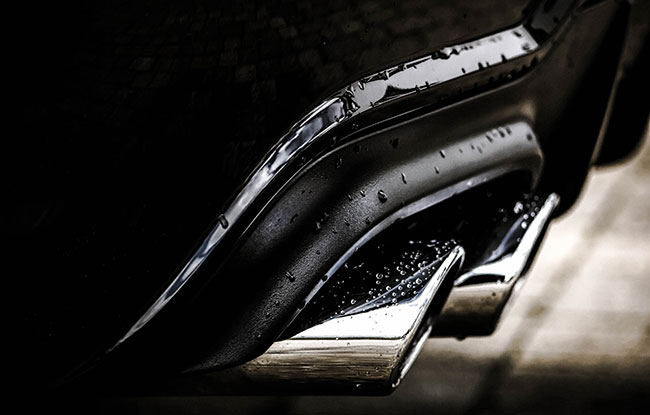Singapore is heading towards a cleaner and more environmental friendly country. The government announced vehicles with higher pollutants like Hydrocarbons, Carbon Monoxide, Nitrogen Oxides and particulate matter will be taxed higher. This is to encourage buyers to choose models that have lower emissions across all criteria. Diesel models in particular will be affected the most in this new regulation.
In 2018, Vehicular Emissions Scheme (VES) will replace the current Carbon Emissions-Based Vehicle Scheme (CEVS) cutting down the number of bands from nine to five. The new scheme will be implemented till end 2019.
This will affect mostly taxis companies which will encourage them to switch to environment-friendly vehicle models.
Based on the new regulation, only petrol-electric hybrid models are likely to qualify for the highest rebate of $20,000.

Current Carbon Emissions-based Vehicle Scheme (CEVS) which will be replaced by end of this year.
|
Bands |
CO2 (g/km) |
Rebate / surcharge (-/+) for cars ($) |
|
A1 |
Up to 95 |
-30,000 |
|
A2 |
96-105 |
-15,000 |
|
A3 |
106-120 |
-10,000 |
|
A4 |
121-135 |
-5,000 |
|
B |
136-185 |
0 |
|
C1 |
186-200 |
+5,000 |
|
C2 |
201-215 |
+10,000 |
|
C3 |
216-230 |
+15,000 |
|
C4 |
Above 230 |
+30,000 |
Source: National Environment Agency
New Vehicular Emissions Scheme (VES) to be implemented from 1st Jan 2018.
|
Bands |
CO2 (g/km) |
HC (g/km) |
CO (g/km) |
NOx (g/km) |
PM (mg/km) |
Rebate / surcharge (-/+) for cars ($) |
|
A1 |
A1 ≤ 90 |
A1 ≤ 0.020 |
A1 ≤ 0.150 |
A1 ≤ 0.007 |
A1 = 0.0 |
-20,000 |
|
A2 |
90 < A2 ≤ 125 |
0.020 < A2 ≤ 0.036 |
0.150 < A2 ≤ 0.190 |
0.007 < A2 ≤ 0.013 |
0.0 < A2 ≤ 0.3 |
-10,000 |
|
B |
125 < B ≤ 160 |
0.036 < B ≤ 0.052 |
0.190 < B ≤ 0.270 |
0.013 < B ≤ 0.024 0 |
0.3 < B ≤ 0.5 |
0 |
|
C1 |
160 < C1 ≤ 185 |
0.052 < C1 ≤ 0.075 |
0.270 < C1 ≤ 0.350 |
0.024 < C1 ≤ 0.030 |
0.5 < C1 ≤ 2.0 |
+10,000 |
|
C2 |
C2 >185 |
C2 > 0.075 |
C2 > 0.350 |
C2 > 0.030 |
C2 > 2.0 |
+20,000 |
Source: National Environment Agency
When we compare the 2 schemes, the maximum caps for both rebate and surcharge reduce by $10,000 from $30,000 to $20,000.
|
Car Makes & Models |
Before 2018 |
2018 Onwards (based on Carbon Dioxide CO2 only) |
|
Toyota Sienta (111 g/km) |
-$10,000 (rebate) |
-$10,000 (rebate) |
|
Toyota Axio (113 g/km) |
-$10,000 (rebate) |
-$10,000 (rebate) |
|
Honda Vezel (117 g/km) |
-$10,000 (rebate) |
-$10,000 (rebate) |
|
Honda Shuttle (119 g/km) |
-$10,000 (rebate) |
-$10,000 (rebate) |
|
Toyota Harrier (122 g/km) |
-$5,000 (rebate) |
-$10,000 (rebate) |
|
Honda Fit (129 g/km) |
-$5,000 (rebate) |
$0 |
|
Toyota Estima (184 g/km) |
$0 |
+$10,000 (surcharge) |
Above table is for reference only and may not be accurate at the time of reading. Above data is based on Carbon Dioxide CO2 emission only and do not include other pollutants hydrocarbons (HC), carbon monoxide (CO), nitrogen oxides (NOx) and particulate matter (PM) – Stay tuned to our latest page on VES for update or contact us for more information.
After the news is announced, we reckon a large number of potential buyers will be rushing to buy new cars which fall under the Band A1 category (CO2 emission below 95 g/km) to take advantage of the higher rebate this year. However, we think this group of car buyers won’t be saving as much as they think because prices for hybrid cars are higher in the first place and many new car dealers which are selling these models might start to increase the prices when they know there is a higher demand.
There is a chance that used car dealers will be hiking their prices as well. It is certainly a better idea to stick to buying a new parallel imported car and we encourage our customers to do so by this year. Securing a new car sooner will also mean lesser chance of paying a higher Certificate of Entitlement (COE) prices at end of this year when everyone is in a hurry to purchase a new car before New Vehicular Emissions Scheme (VES) is implemented.
At the end of the day, you should be looking at the functionality of the car, whether it fit your budget and needs, not the car which has the highest rebate at $30,000 now. Even with this higher rebate, you do not see that many electric cars on the road today due to the pros and cons of owning such car. For example, getting a full electric car will mean inconvenience when your battery is low and the higher maintenance fees like costly parts replacements along the way.
Cars & Stars has a wide range of parallel imported car makes and models available. Most of our cars can get you a $10,000 rebate as well as low fuel consumptions which can help you save more in the future. Need more information on our paralleled imported cars in Singapore? Call us or visit our showroom today!
